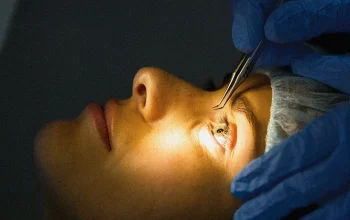The World Health Organization (WHO) has published a report on global eye health, evaluating 15 countries in six categories. The report contains key findings and calls to action for improving eye health and preventing disability. This report follows previous global initiatives, including the World Health Organization report on vision, the Lancet Global Health Commission on Global Eye Health, and the IAPB Vision Atlas. These reports are linked to the UN Sustainable Development Goals.
As people age, common eye diseases tend to become more common. Many may develop painlessly and without any apparent symptoms, and a person may not notice any change in vision until it is too late. A regular eye examination can help detect a problem early and improve your vision. Also, it’s important to share your concerns with your doctor, as aging can cause eye problems and may lead to other health complications. However, the onset of these problems usually does not show up until a person is 40 years of age or older. Taking prescription reading glasses may help.
AMD, or age-related macular degeneration, is a condition in which the retina deteriorates, leading to loss of central vision. AMD occurs in one or both eyes and causes blurry, distorted, or dark spots in the center of the field of vision. If caught early enough, age-related macular degeneration can be prevented. It’s important to note that both dry and wet AMD can lead to rapid vision loss. Prevention is essential in both cases.
Glaucoma, another eye disease, affects the optic nerve, and can result in blindness or permanent vision loss. Early stage glaucoma often doesn’t cause symptoms, but can be treated with prescription eye drops, oral medications, and surgery. The eye doctor may recommend a prescription treatment for glaucoma. This disease is the leading cause of blindness in people over 60. So, make sure you don’t wait to have your eye exam.
Cataracts are another eye condition that causes progressively cloudy vision. They occur when the lens of the eye becomes opaque. Cataracts are often caused by a combination of factors, including sun exposure, corticosteroid use, or smoking. If you have any of these risk factors, your doctor may recommend regular yearly exams. If you notice changes in your vision, schedule an eye exam immediately. A comprehensive eye examination is essential in detecting eye problems early, which can lead to a permanent loss of vision.
Another risk factor for aging eyesight is exposure to ultraviolet rays. UV rays cause damage to aging skin and eyes, and increase the risk of cataracts and macular degeneration. Make sure you wear sunglasses with UV filters. Wear sunglasses that wrap around your face if necessary. Wear sunglasses in all colors, including blue, green, and purple. They can have UV filters on any type of lens. For best results, wear sunglasses with UV filters to protect your eyes.
Inflammation of the eyelids is a common symptom of age-related macular degeneration, which affects the center of the retina. Inflammation of the retina can affect image transfer. Surgical procedures are available to remove this inflammation. Surgical treatment is also available to restore vision. But before opting for any treatment, be sure to consult with a physician first. It’s important to understand what these symptoms mean for you.




